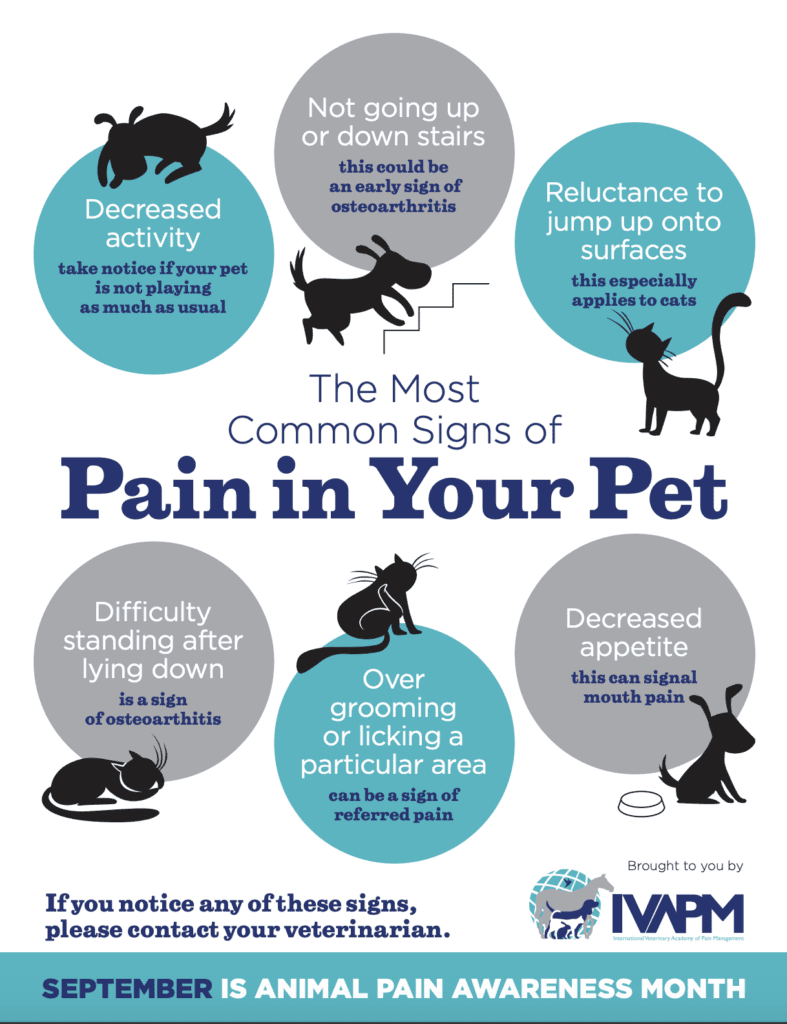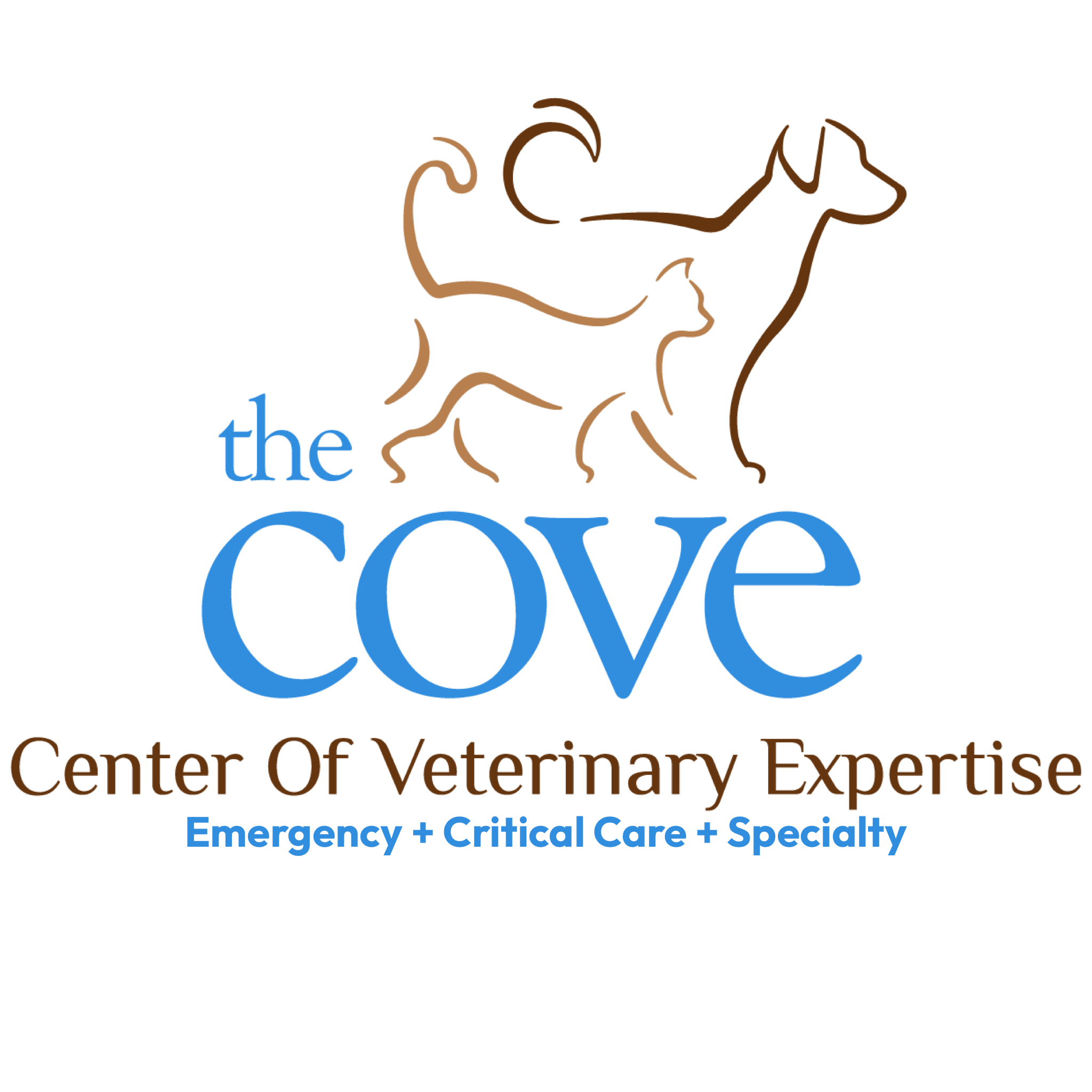It can be challenging to tell when your pet is in pain. Animals have an instinctual urge to hide discomfort and weakness, and they can be very good at it. It is essential to stay attentive and seek veterinary medical care if your pet is in serious or consistent pain.
Every day here at The COVE, our emergency room team treats companion pets suffering from pain due to an injury, chronic illness, or early onset of a specific disease. For Animal Pain Awareness Month, we are sharing the top five signs and symptoms to look out for in your dog or cat.
1. Changes In Your Pet’s Routine
Indicators that your pet isn’t feeling well can include increased or irregular sleep time, loss of appetite, less or more water intake, and lack of interest in going for walks or playing with favorite toys.
2. Changes in Your Dog or Cat’s Behavior
Has your friendly dog become aggressive? Has your lap-loving cat become oddly antisocial? Behavioral changes can also be a strong indicator of pain. Avoiding contact, not greeting you at the door, hiding, growling, snarling, defensiveness, and sudden incontinence are all things you should have checked out with your veterinarian.
3. Physical Discomfort
Physical pain doesn’t necessarily manifest in a whimper or a yelp. Restlessness, inability to get comfortable, difficulty chewing, heavy or shallow panting, bloodshot eyes, dilated or constricted pupils, and changes in posture such as hunching, or rigidity could all be signs that your pet is in pain.
4. Physical Changes
Increased heart or respiration rate and a rapid weight change—usually weight loss—are strong indicators you have an uncomfortable pet.
5. Grooming Behavior Changes
For dogs, excessive licking can indicate pain, as an attempt to soothe either an external wound or an area that is painful on the inside—for example, licking a knee after pulling a ligament.
Cats usually are meticulous groomers. Therefore, they often indicate pain with an absence of grooming behavior. While dogs and cats are both good at hiding pain, cats can be particularly talented. That is why it is critical to be aware of your pet’s habits and behavior, and monitor any changes that could indicate a serious illness or injury.

Treatment Options For Pets In Pain
There are several options for treating pain in your pet, including medication, surgery, rehabilitation, acupuncture, and/or diet changes. If your furry companion is suffering from acute or chronic pain, a comprehensive exam and a personalized treatment plan from your primary care veterinarian is the best place to start.
The COVE is Open 24/7 For Pet Emergencies
If your pet’s pain is severe or worsening during regular business hours, please call your primary care veterinarian first. If it is after hours or instructed you to come to The COVE, you do not need an appointment or referral to receive emergency services. We will always communicate with your pet’s primary care veterinarian regarding your pet’s condition to ensure continuity of care and appropriate follow-up.
However, please note that our emergency caseload is steadily on the rise, which has prompted us to reassess our process. To provide the highest quality of medicine and ensure every patient receives the care they deserve, we have focused our emergency services to temporarily only treat those patients who fall in the red and yellow triage categories. Please reference the triage chart here. Patients with ailments in the green category are encouraged to make an appointment with their primary care veterinarian, or request a referral to be seen by one of our experts in cardiology, surgery, or dentistry if appropriate.
For any questions or concerns about our pet’s emergency care, please call us at 757-935-9111, and we are honored to assist you with your inquiry 24/7.
About Us
The COVE’s veterinarians and staff wholeheartedly embrace the core values of community, collaboration, commitment, compassion, and integrity. This focus ensures that pets, the people who love them, and their primary care veterinarians have as positive and affirming a healthcare experience as possible, regardless of the circumstances that bring us all together.
